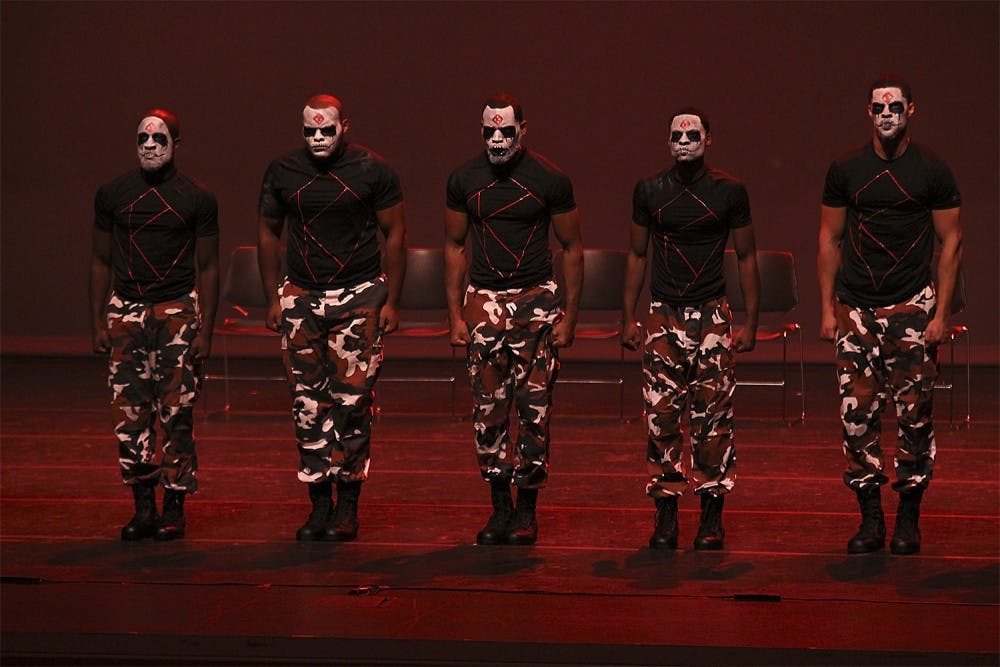“As a University, we pride ourselves on being ahead of the curve,” Townsend said. “It’s not to say, ‘Keeping up with the Joneses.’ But really we are the Joneses.”
Price tags vary as much as design. Wake Forest sunk $70,000 into their plots, a circular nine-column memorial right in the center of campus, said Steve Hirst, director of student engagement. Yet he said the investment was well worth it — a visual representation of the commitment to the NPHC organizations.
But that design might be hard to do at a campus as land-locked as UNC’s.
“The plots tend to be places on campus of honor and distinction, to be revered — something that everyone on campus can take pride in symbolically,” Bachenheimer said. “So where does something like that need to be? You don’t want it to be just anywhere.”
Yet much of the challenge has simply been sustaining interest.
The struggle for plots at UNC is not new, but former National Pan-Hellenic Council president and 2014 graduate Sharessa Royster reignited the discussion in January. In a sense, Townsend has inherited the conversation, and it’s up to her and junior Michael Morrison, the council’s reporting secretary, to maintain the momentum.
Over the past five years, National Pan-Hellenic Council members and advisers had informal conversations with Bachenheimer’s office, which inevitably subsided without someone to take the cause up.
“The answer was, ‘Of course we would like to do that, but there’s a lot of red tape involved,’” said former council executive member and 2013 graduate Joe Bryant.
Bryant said the issue came up particularly during probates, the initiation ceremony for National Pan-Hellenic Council organizations. At historically black colleges and universities, plots are a critical part of the process, where brothers come to convene and sing the hymn at the end.
“It means a lot more when you take your first steps onto to the plot,” Bryant said. “It’s like the last step in the journey.”
Like probates, the plots are deeply rooted within National Pan-Hellenic culture at both historically black colleges and predominantly white institutions, Morrison said.
To get the day's news and headlines in your inbox each morning, sign up for our email newsletters.
“Traditionally and historically, particularly at HBCUs, the black Greeks have really served as a bastion of leadership,” said 1992 graduate Brian Beverly, National Pan-Hellenic Council district representative and former UNC Omega Psi Phi Inc. adviser.
“The promotion of plots have gone hand and glove with the presence of student leaders on the campus.”
Walter Egerton was a charter member of UNC’s Omega Psi Phi Inc. in the 1970s.
He recalled joining in 1973, when the appearance of the first African-American fraternity on UNC’s campus was enough to raise eyebrows — plots being completely out of the question.
“The University had never seen anything like it before — they just didn’t know what to do with it,” Egerton said. “You’re talking about nine African-Americans walking around, dressed the same, always in line and going places together.”
“Putting on a step show — what was that?”
Egerton said UNC today is a direct result of their efforts.
“What we were able to do is change the thinking of Carolina – (it was) very monolithic when we got there — and we put color into it,” he said.
Due to the smaller size of National Pan-Hellenic chapters, it can be easy to overlook their contributions to campus, Morrison said.
“It’s disheartening to walk around this campus, and see nothing dealing with the National Pan-Hellenic Council,” he said.
Morrison said that’s why the plots are so significant.
“Especially at a PWI, what better way to show how far we have come, than to have plots on this campus? That would speak volumes,” he said. “I believe the founders of these organizations would be smiling so much if they saw that we had plots at a PWI.”
university@dailytarheel.com




